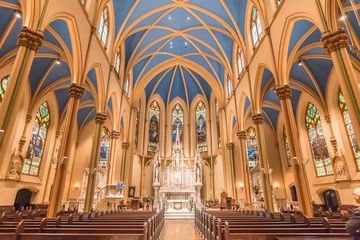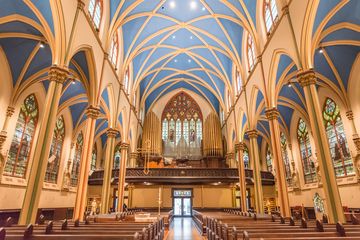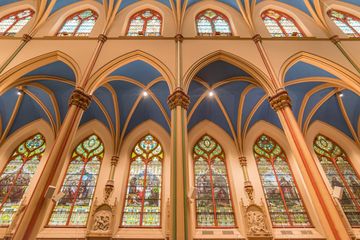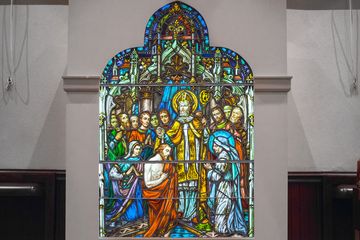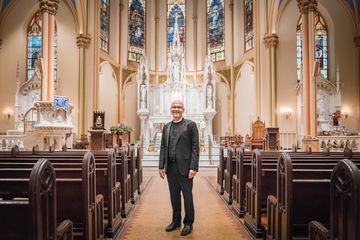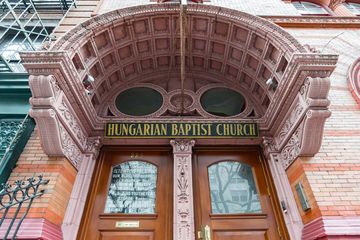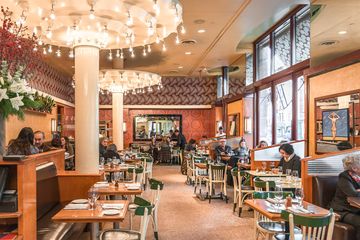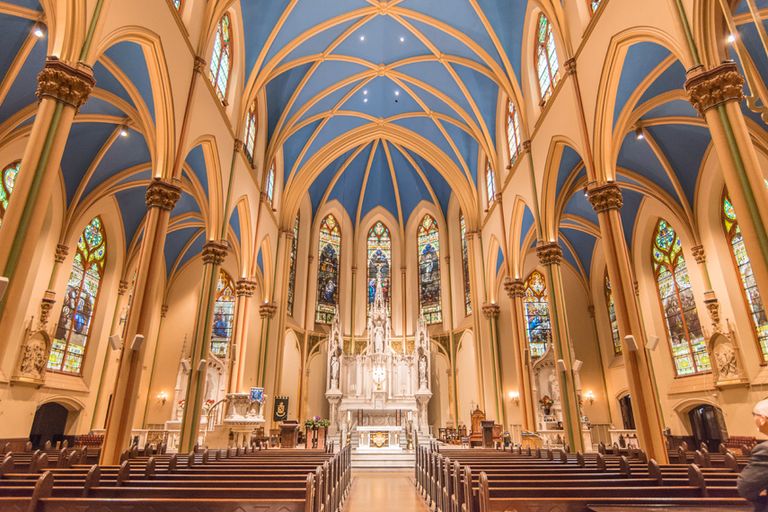
When I met Reverend Donald Baker at the end of 2015, he had been the pastor at St. Monica's for only four months. He already, however, had formed a deep sense of adoration for the church and its community, especially its emphasis on family and education. It was clear that he wasted no time delving into life at the church, since he met me having just come from coaching the new altar servers and was about to celebrate the mass for World AIDS day directly after our interview.
Father Baker is pleased to be affiliated with a church that is connected to an education center. St. Stephen of Hungary school was merged with St. Monica’s after St. Monica’s merged with the Saint Stephen of Hungary parish and the Church of St. Elizabeth of Hungary. Many of the families that attend St. Monica's are asking how they can apply to St. Stephen's – "The school is really bursting at the seams," Father Baker proudly told me. Though the relationship with St. Stephen of Hungary School is new, St. Monica's is used to having a school under its wing. Between 1881 and 1974, there was a school attached to St. Monica's. Shortly after it closed, the Caedmon School, a private elementary school, took up residence in the empty school building and has been there ever since. Although non denominational, Caedmon’s founders were Catholic and thus Caedmon offers Catholic religious education to any parents requesting it. St. Monica’s aids in that.
Built in June of 1879, the church has stayed in the same neighborhood since its inception. The original building stood at 404 East 78th Street, but in 1906, a new church was built at the current site. "This was the Irish church," Father Baker explained. The religious community was divided along cultural and linguistic lines. For example, St. Elizabeth was the Hungarian church and St. Joseph was the German church. Reverend Baker informed me that the older generation at St. Monica's is still primarily Irish.
Having spent twelve years on the Lower East Side, first at St. Teresa's on Henry Street and then for seven of those years at the Church of the Nativity, the Upper East Side is proving to be a new experience for Father Baker. Downtown was very multicultural: Daily masses were said in Mandarin, Cantonese, Spanish, and English. Reverend Baker had to be able to function in Spanish as a priest. "That was a real challenge, but I loved it," he said. He also joked that the demographic in the neighborhood was very different: "If I went to a restaurant, I was the oldest guy there. Up here, it's all families." Often referred to as "Pizza Mass," a special family service is held on the first Saturday of the month, allowing young children who cannot always sit quietly to attend with their parents. Afterwards, everyone is invited to have pizza.
Father Baker led me through the rectory, pointing out, "This is where we live: it's a short commute," and on into the main sanctuary. A statue of St. Monica, the mother of St. Augustine, stood at the altar. The first thing that caught my eye was the enormous organ. Music is a large part of the community and Father Baker mentioned that people are constantly singing. Since it was December, he was anticipating that it would be standing room only for the Christmas mass, with over six hundred people in attendance. "'Catholic' means 'Universal,' and I take that very seriously," he told me before I left, and then added warmly, "Everyone is welcome – you already have a home here."
